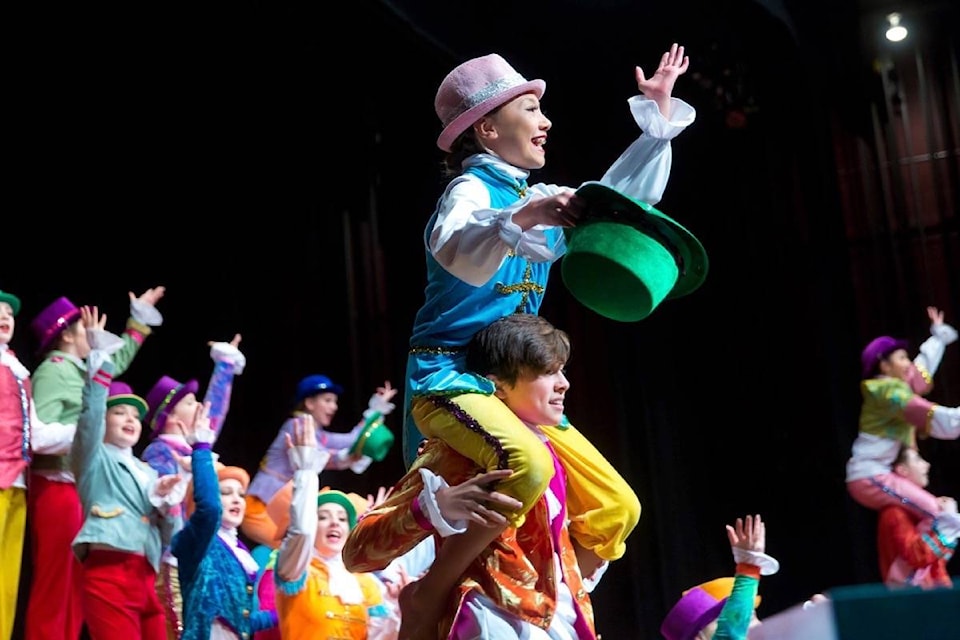It is summer hot and humid with the rain. So why am I taking dance classes in this heat? Sweat equity? And I am not alone. Summer school dance and theatre classes are popular - for all ages. While I am not in an age category that has hopes of becoming professional, many young dance artists do have that goal in mind. Constant training and skill upgrades are part of the professionals’ package.
Well, here is the good news for those heading for the professional world. As of July 15, 2019, the average salary for an actor is $16.28 per hour in Canada (Canadian Actors Equity Association). Of course, that rate can change according to the type of role and the theatre company. For musicals, dancers in the ensemble usually come at the bottom of the pay scale.
Musical theatre dancers-in-training- mostly aspire to be on Broadway, if only for a brief moment in time. For a Broadway dancer, the opportunity to be part of the creation of an original show is perfection. These creation workshops pay the dancers about $1,000 per week for their time and talent.
If the show is a huge success, others reap the rewards. Dancers do not – until now. Thanks to a new deal between Actors’ Equity Association and The Broadway League, performers involved in a production’s development will now receive their own cut of the earnings. The new agreement, which was made in February, means actors and stage managers will get paid more for their participation in labs and workshops. And, after the show recoups its initial investment, they will split 1 percent of the profits (including any touring productions), for up to 10 years.
Some productions, like Mean Girls and Frozen, have voluntarily put profit-sharing arrangements in place. But it did take action by Equity (union) members by a month long strike involving more than 3,000 working Equity members. Stress on the ‘working’.
This is a highly competitive industry where the average annual income is about $23,000. Great work if you can get it, right? And Broadway shows are getting more complex, with more emphasis on dance. So good to know that Broadway dancers – traditionally the lowest paid ensemble members – are getting a bit more of the profit. It will filter down to the rest of professional theatre companies eventually.
So keep training and taking those summer classes.
Of course, there is more money to be made in film. Watch for the Royal Ballet’s Francesca Hayward as Victoria, the shy white kitten, in the new film version of Andrew Lloyd Webber’s musical Cats. It will be in theatres by December, You can view the trailer now and may recognize Taylor Swift, Idris Elba and James Corden as anthropomorphized felines, but Francesca is the real star here with her classical ballet rendition of the song, Memory.
If nothing else, Cats as a musical does underlie the need for intensive ballet training if you want to make it as a Broadway musical theatre performer. We don’t dance for the money, right? It is our art. Our passion. It is a gift we have inside and need to share.
BC Alliance For The Arts posts a monthly newsletter on line. It is BC ArtsPost, a paid promotional service available to British Columbia’s cultural sector through the BC Alliance for Arts + Culture.
It is a vital and important service, because life as an artist – visual or performing – is not an easy life choice. Especially if you have a disability of some type.
“I was born to represent diversity” says artist Teresa Pocock.
Pocock uses words, pictures, and music to express her unique worldview and to assert her rights to inclusion. She challenges the systemic discrimination faced by people who are different — especially those who have intellectual disabilities.
Her new art exhibition, “Born to Represent”, is being presented by Planned Lifetime Advocacy Network (PLAN) at 312 Main Street, in Vancouver’s Downtown Eastside. The exhibition features her music videos, self-talk poetry, and over twenty-five of her large-scale artworks.
“I don’t think I was born to dance, but there is no doubt that this unique artist was born to represent. I was born with what was seen to be a disability,” says Pocock. “But no, no, no. It’s just me… living in reality.” She is proud to represent her Downs Syndrome disability. In 2013, as a result of a crisis, she was wrongly declared “incapable” and was forced into an Ontario long-term care institution. Fortunately, with help, Pocock stood up for her human rights and won back her freedom. She moved to B.C. and has blossomed in the gritty Downtown Eastside of Vancouver.
Talk about overcoming discrimination and adversity because of genetic and intellectual differences. For Pocock, art and self-advocacy are powerfully intertwined. Her art and social media campaign earned an apology from the Ontario government for the inappropriate treatment she received. “I love my human rights”, she says. “Don’t take them away just because I have Down syndrome.
There is more to this amazing story. Amazing because one person, Teresa, found herself and her art to be part of the whole. “It’s totally amazing: free to be me! You have to realize, I speak up.” And she has found her purpose and meaning.
There it is. People – whether dancers or artists – have something important to represent. We don’t need painted crosswalks, benches, or bylaws. We just need to believe in what we do and what we are and share it with others. As ever, support from family, friends, and the community at large is important. Thank you BC Alliance for Arts, thank-you Teresa, thank you Francesca, and thank you to dance teachers in our community who do believe there is something special inside each student.
Melanie Minty writes twice monthly for the Now-Leader. Email: melminty@telus.net.
